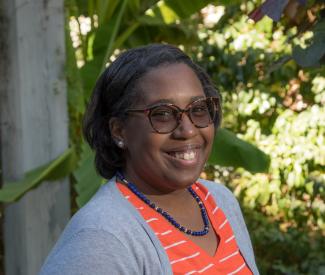
History Ph.D. candidate Kimberly St. Julian-Varnon’s work looks at how the African American experience in the Soviet Union shaped Black identity and how the presence of people of color shaped Soviet understandings of race.
———————
History Ph.D. candidate Kimberly St. Julian-Varnon’s interest in all things Russian started with a childhood illness. It forced her to stay home from fifth grade for a few weeks at her family’s farm in the rural southwest Texas community of Dayton, population about 7,000. “To pass time I watched this eight-hour miniseries on the History Channel called ‘Russia, Land of the Czars’ and it blew my mind,” she says. “In sixth grade I was the only student in my little middle school to do a book report on someone who wasn’t American: I did mine on Joseph Stalin.” And so, a Russian historian was born. Her current research in the School of Arts & Sciences revolves around how the African American experience in the Soviet Union shaped Black identity and how the presence of people of color shaped ideas and understandings of race, ethnicity, and nationality policy in the Soviet Union and post-Soviet space.
Penn Today talked with St. Julian-Varnon to find out more about her research, how these seemingly disparate notions of race in Russia and the United States are connected, and a few surprising discoveries.
What does your research involve?
I am looking at how race functions and how people understand race in the Soviet Union and the Eastern Bloc. My project looks at how Soviet residents understood Black visitors and what they understood about race. The Soviet Union and the Eastern Bloc were officially ‘raceless’ places; they didn’t recognize race, and you couldn’t identify as a race. How does race function in a place that says race is not a category?
Read the entire interview HERE
